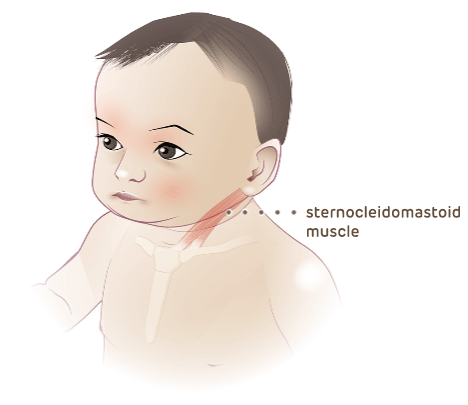Congenital Muscular Torticollis Clinical Pathway — Outpatient Specialty Care and Primary Care
Congenital Muscular Torticollis Clinical Pathway — Outpatient Specialty Care and Primary Care
Healthy Infants ≤ 12 Months with Suspected Congenital Muscular Torticollis (CMT)
This pathway will be used for healthy infants ≤ 12 months with suspected congenital muscular torticollis.
Definition of Congenital Muscular Torticollis

- Torticollis is a term to describe the tilting of a child’s head to one side. It occurs when there is tightness of the sternocleidomastoid or SCM and causes the infant to tilt their head toward and rotate their head away from the tight side.
- There are different types of torticollis; however, Congenital Muscular Torticollis (CMT) is the most common type of torticollis in infants.
- Impaired neck range of motion places these infants at risk for asymmetrical movement patterns during development.
Exclusion Criteria
- Child with suspected or diagnosed genetic syndrome
- Children > 12 months of age
- Infants with new onset of torticollis ≥ 6 months of age